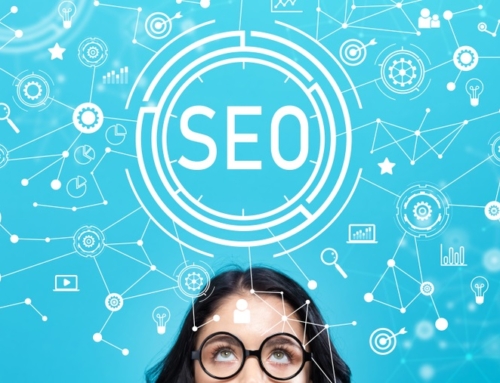Moving the Disabled to a User-Friendly Experience Online
By David Woodburn
We are in an information world, no doubt. But there is also no doubt that our world is more than just information. In life for most people, our world is about experience and experiences.
Back in the 20th century, we were an experience-oriented society. Then, in the 1980s and 1990s, the Information Age was born – our world shifted from an experience-based environment into one that parlayed information into all aspects of society through computers, and later the Internet.
Experience to Information
After playing in the yard and going on trips into the wilderness, suddenly our world was being turned upside down. Now it was not about experiences, but about information. We were soon to be inundated with data in the form of zeroes and ones, and, not long after that, we were all feeling naked without our pocket supercomputers in our possession. We were about digital fruit and Googling things, which sounds a bit naughty.
In that tableau, there was a cohort of disabled people in America who had different experiences than their able-bodied counterparts, and as the information age became more prevalent, the gap between the abled and disabled widened.
Americans with Disabilities Act (ADA) of 1991
The federal government took action to narrow the chasm of experience and information for disabled Americans with the enactment of the Americans with Disabilities Act of 1991. The Act addressed most aspects of life at the time including employment issues involving disabled workers – such as protecting disabled workers from discrimination in hiring or employment and allowing participation in most federal programs.
Congress required all parts of the economy to make reasonable accommodations for disabled people including ramps for wheelchairs and mobility-challenged individuals, hearing devices and sign language translators for the deaf and hard-of-hearing individuals, and tactile or audio devices for blind individuals.
Accessibility of Information
Another part of the Act was an addition later in the decade as computers became more prominent and the aforementioned information became part of our society. The Act mandated that disabled individuals be given access to all the same information as able-bodied persons. This came in the forms of Braille, audio transcriptions, sign language and other tools that provide the exact information available to sighted and able-bodied individuals who could read a pamphlet or note.
Digital Accessibility
This mandate for equal access to information has naturally led to provisions in the Act that address digital assets such as websites, blogs, and other information tools available on the Internet. This digital accessibility has provided equal access to information to disabled individuals who may or may not have the same ability to visualize or see digital assets such as a website in the same way.
The Pervasion of Blindness
There is a perception that blindness is not a significant issue in American society. After all, a small percentage of people have seen or interacted with people who move around with one of those straight white canes.
In the general definition of blindness, those white cane toters are a small percentage of the entire blindness community. It is estimated that about 10 percent of the U.S. population has some level of blindness. That’s nearly 35 million people who are on the blindness spectrum, ranging from total blindness to legal blindness on one end to those who only need glasses or magnifiers to read or work with small objects, or even reading items on the Internet.
Blindness and Digital Accessibility
One of the major pushes over the last 30 years of the ADA has been providing access to information for blind individuals. This involves adding audio descriptions to movies and TV shows available on various streaming services, audio devices in movie theaters, audio assistance in museums and art galleries, and more recently with websites and other digital assets.
The Reality of Digital Accessibility
The ADA was written at the nascent stage of the Information Age, and that is where it has remained, even as our society is adapting back to an “experience” society (even if many of the experiences are digital in nature). What this means is the reality of digital accessibility in terms of compliance with the ADA, is that the standard for compliance is the lowest bar.
Blind individuals have access to screen-reading software such as JAWS to help them get information from a website they cannot see. With technology advancing since the 1990s, however, there is capability for websites and other digital assets to be more accessible than the ADA requires. There is now an opportunity to give blind individuals not just access to the same information, but also to give them a similar experience on a website as sighted individuals.
Consider Your Market
Just consider the product or service you are offering in the marketplace. Would blind individuals want it, need it, or use it? If so, think about the reality that your website, which may be ADA compliant, may still leave up to 10 percent of your potential market out of the user experience on your site. Sure, some of them may get the information they need to buy your product, but would they get the same or similar experience on your business website – would they be able to access email, order forms, a “buy now” button, or other items as a sighted person would?
If the experience is different, in a negative way, could your business afford to shun 10 percent of the market?
Accessibility Audits in a Nutshell
To satisfy those questions, you might be well-served to have an accessibility audit performed on your website. While there are plug-ins and extensions that attach to your website and can help you with accessibility, they are only as good as the initial programming. In other words, they do a poor job of making your website more accessible than the ADA-compliant code that is already embedded in your website.
The best accessibility audit is conducted by a human – one who likely has low vision or is blind. This person can assess your accessibility by evaluating individual pages to determine how similar a blind person’s experience is to that of a sighted person. The auditor goes page by page, through several browsers on a desktop or laptop computer, a smartphone or tablet, and a mobile browser or two, plus screen readers such as JAWS on desktop, VoiceOver on iOS, or TalkBack on Android, to assess the accuracy of the screen reader in catching all of the information and items on a webpage that a sighted person can observe.
After the audit, the auditor will provide a comprehensive report of your website’s accessibility to the vision impaired. Even if you have the same element on every page, it may not be read similarly by a screen reader, or it may be treated differently based on the browser that is used (e.g. a user may observe a testimonial section on every page in Google Chrome but it may not appear if Mozilla Firefox is used). And that same section may be read by JAWS on half of the pages in all browsers, or just on mobile.
Experience Over Information
As many businesses operate online, it’s now more important than ever to not just provide information to all visitors to your website, but it’s also important to give all visitors the same user experience. All users, despite a disability, should have the opportunity to seek customer support, place an order, set an appointment, request a quote for your products or services, or email someone on your team with specific questions. Websites are not just about information; they have become their own experiences.
An accessibility audit of your business website can help you understand the experience of blind individuals and improve your website to reach more of that market and keep them coming back. It also supports your business’s search engine optimization (SEO). This can help your company build a special following because blind or sight-impaired users will be loyal to businesses that give them a positive experience on a website.
Customer service is in a digital age now, and excellent customer service online is encapsulated in an excellent interactive experience on your website, social media, or other digital asset or platform. Most businesses can’t afford to ignore 10 percent of their markets, and an investment in an accessibility audit of your business website can provide a dynamic return on that investment in sales and return visitors.




